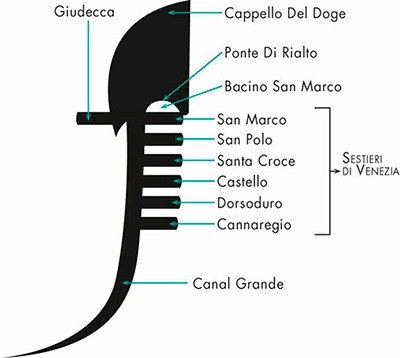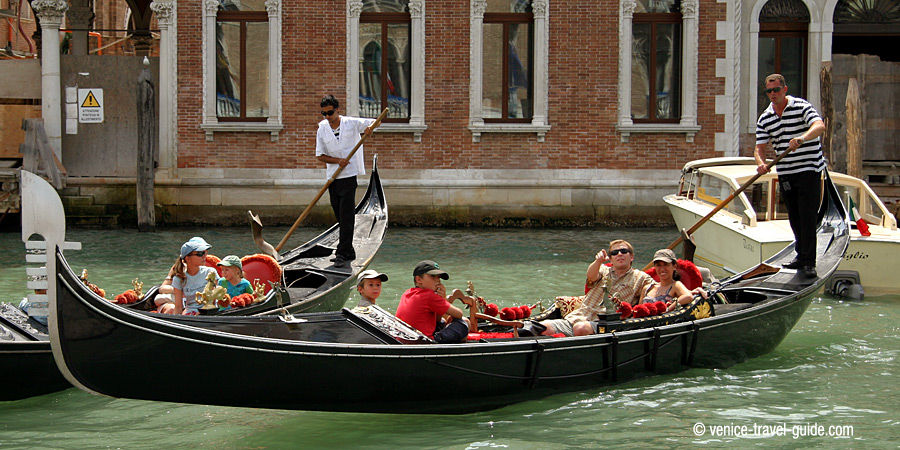The Venetian gondola is first mentioned in an ancient document from 1094. Initially somewhat crude, it developed into a beautiful, elegant and delicate vessel. Today it is probably the most famous boat in the world. There are currently 405 of them.
Take a Gondola Ride through the canals of Venice. It’s better take a gondola ride on the quiet, back canals than on the crowded Grand Canal. The official rates is 90 euros during the day (from 9am to 7pm) and 110 euros at night time (from 7pm to 3am) for up to 5 people. Here you can book the cheapest gondola ride.
The Venetian Gondola
Of unknown origin, the name could come from the Latin term cuna, cradle, and from there cunula, or small rocking boat.
In the beginning, each owner of a gondola chose its own colour. Over time, due to the excessive magnificence used by some nobles in their decoration, the Provveditore alle Pompe (established from 578 to check the excesses in the behaviour of the Venetians in the way of dress and luxury) decreed that the gondolas had to be compulsorily black.
The gondola has a number of details in its construction that make it suitable for the waters of the Venice lagoon. It has a flat bottom, so it can float in very little water. It is a long, narrow boat, with a single oar and asymmetrical: the left side is 24 centimetres wider than the right, to allow it to be handled by a single gondolier (the first gondolas were not asymmetrical and needed two oarsmen). Its length changed over time, becoming established at 11.50 metres long by 1.40 metres wide. Between 8 and 13 different types of wood are used for its construction and it is made up of 280 elements.
Previously, gondolas had a removable cabin in the center called a felze, to protect passengers in winter or for eventual concealment.

Ferro della Gondola
The bow has a serrated iron (ferro della gondola) that evokes Venice itself:
- The top evokes the Corno Ducale, the doge's hat.
- The curved mast recalls the undulation of the Grand Canal.
- The semicircle under the Corno Ducale evokes the Rialto Bridge.
- The six prongs represent each of the Sestiere of the city, in this order: San Marco, San Polo, Santa Croce, Castello, Dorsoduro and Cannaregio.
- The isolated prong in the opposite direction represents the island of Giudecca.
- The decorated tips between prong and prong represent the largest islands in the Lagoon: Murano, Burano and Torcello.
Take a Gondola Ride along the most beautiful part of the Grand Canal and its hidden waterways.



